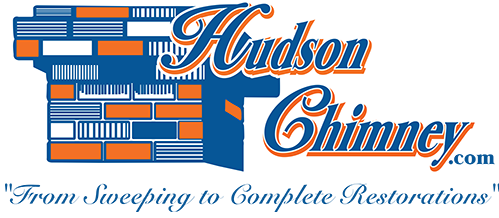by Mark Hudson | Nov 30, 2014 | Ash Disposal
If you have a wood burning chimney, you may be unsure of how to properly and safely dispose of the remaining ash in your firebox. You may also be unsure as to how often you should have your fireplace and chimney professionally cleaned. The experts at Hudson Chimney have the expertise and skill necessary to answer all of your questions regarding your fireplace and chimney as well as to clean and help you maintain and repair your chimney.

When you are emptying your firebox of ash, it is important that you protect your hands from leftover embers by wearing leather gloves. Use a metal scoop to transfer the ash from your firebox to a metal bucket and add a little water. Place the bucket in a location away from any combustible materials (outside the home is best), and let it sit. It is also a good idea to use the metal scoop to mix the ash and break up any chunks before you let it sit. According to The National Garden Association, the ash can be used as a fertilizer for your gardens. However, this is not the case when you burn cardboard, treated wood, or painted wood, which create toxic ash and should not be burned in the first place, as they also release toxic fumes when they are burned.
When you do remove ash from your firebox, according to the Chimney Safety Institute of America, it is beneficial to leave some of the ash. The CSIA recommends that you leave a layer of ash that is one inch thick on the bottom of your firebox in order to make building and maintaining a fire easier, create hotter fires, and protect the floor of you firebox. However, it is still important to clean your firebox because leaving more than a one inch layer can lead to the premature burn out of your grate as well as decrease the amount of fuel you can add to your fire. If you do leave a layer of ash, make sure to remove this layer at the end of chimney season, when you will no longer be using your chimney.
It is also important to have your chimney cleaned by a professional at least once a year. Only a professional can thoroughly clean your chimney as well as remove all of the creosote that has built up. Creosote, which is very flammable, is created as a byproduct of wood burning fires when hot smoke and gases hit the cool sides of your chimney. It is important to have creosote professionally removed so it does not build up into glazed creosote, which can only be removed from your chimney with chemicals.
Call Hudson Chimney if you have any questions about the proper disposal of ash or if you have not had your chimney cleaned yet this year. The experts there have the skill to provide you with a clean, safe, and efficient chimney for the winter.
by Mark Hudson | Feb 14, 2014 | fire safety, fireplaces

Know how to remove ash the right way.
Once burned, solid fuels like wood, coal, and pellets will leave homeowners with ashes to remove. The amount of ash and frequency of removal will depend on several factors including the type of wood burned (softwoods or hardwoods, anthracite coal or bituminous, etc.), the type of fuel, and the appliance itself. For instance, if you burn coal you’ll have much more ash than you would from burning wood. Ash will also contain different substances depending on the fuel. Coal ash contains things like cobalt and boron that are toxic to humans, animals, and plants.
Precautions must be taken both during and after ash removal, and believe it or not, there may be ways to reuse your ash once you’ve removed it. Perhaps in your garden! Read on for all the basics of ash removal or feel free to call Hudson Chimney with any questions you may have. Also refer to the Chimney Safety Institute of America’s guide called “To Remove or Not to Remove Ash.”
How to Remove Ash
We would venture to say that the majority of homeowners who scoop ash do so into a simple metal pail. This pail then gets set outside. This isn’t a great idea, especially if it’s being set outside onto a wooden porch. Because hot coals can survive buried beneath ash for even a few weeks it is imperative to treat ash very carefully, as a hot pail can char a wooden deck. We’ve also seen coals be blown onto a deck, where they may catch fire.
The answer to these potential problems is to purchase a dedicated ash pail or ash holder, which should have a large handle and a bottom that’s slightly offset from the very bottom so that it doesn’t make contact with the surface on which it’s resting. Most importantly, the pail or holder should come equipped with a lid that closes tightly. There are numerous options for ash pails and holders in many styles so you don’t have to sacrifice style for safety.
And if you have ashes from burning wood, you may want to consider adding the ash to your garden to diminish its acid content. Wood ash has a high content of potassium, calcium, sodium, magnesium, and phosphorus and can help decrease the acid level of your soil if need be. We recommend testing your soil prior to adding wood ash, however, as it may not prove helpful if your soil is very dry to start with.
If you live in northeast Florida and need your fireplace, stove, and/or chimney professionally cleaned, contact Hudson Chimney. We handle everything from simple sweeps to complete restorations.
If you’re interested in ease of cleaning, you may also want to read about our chimney clean-out doors, which allow you to clean your fireplace and chimney flue.


